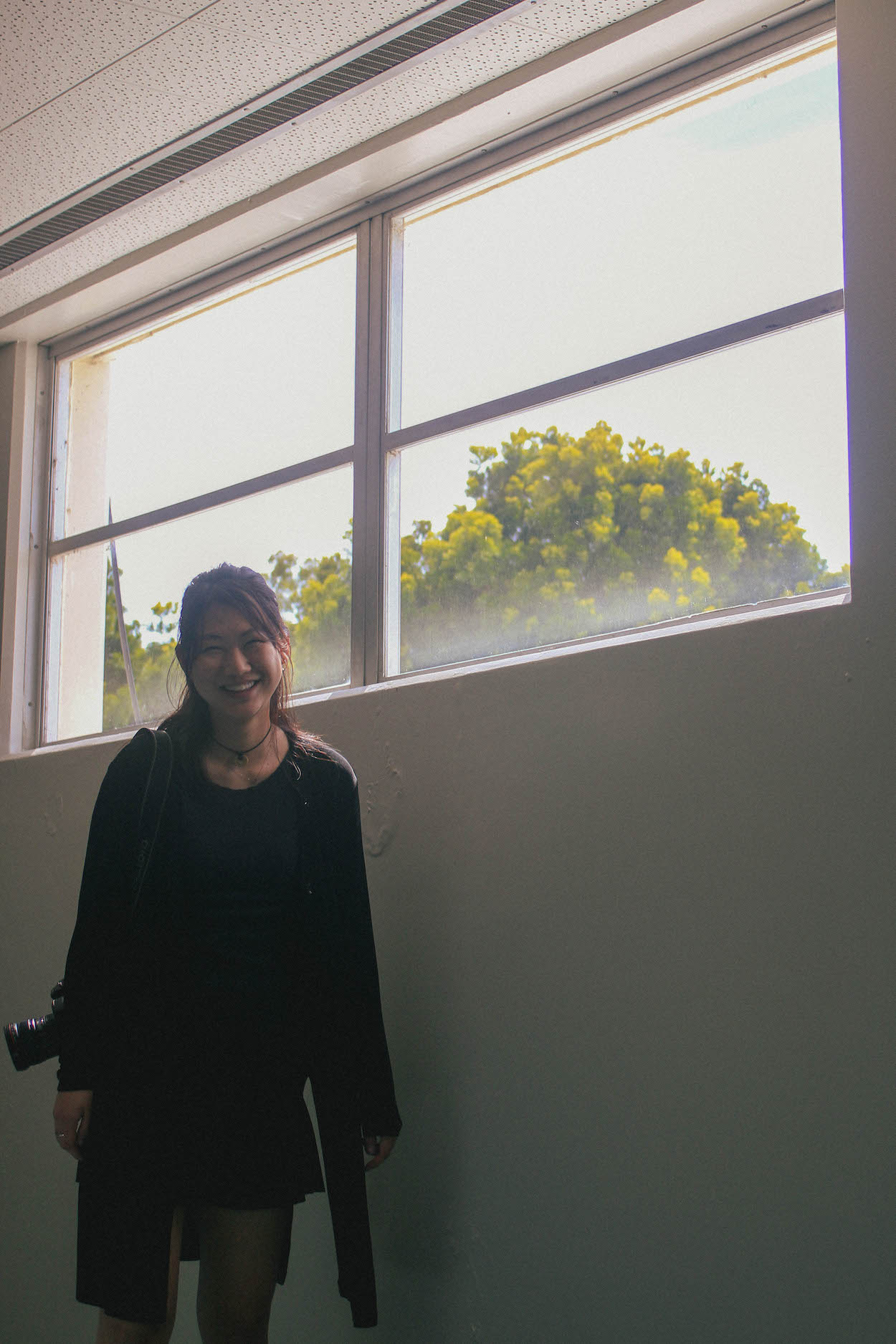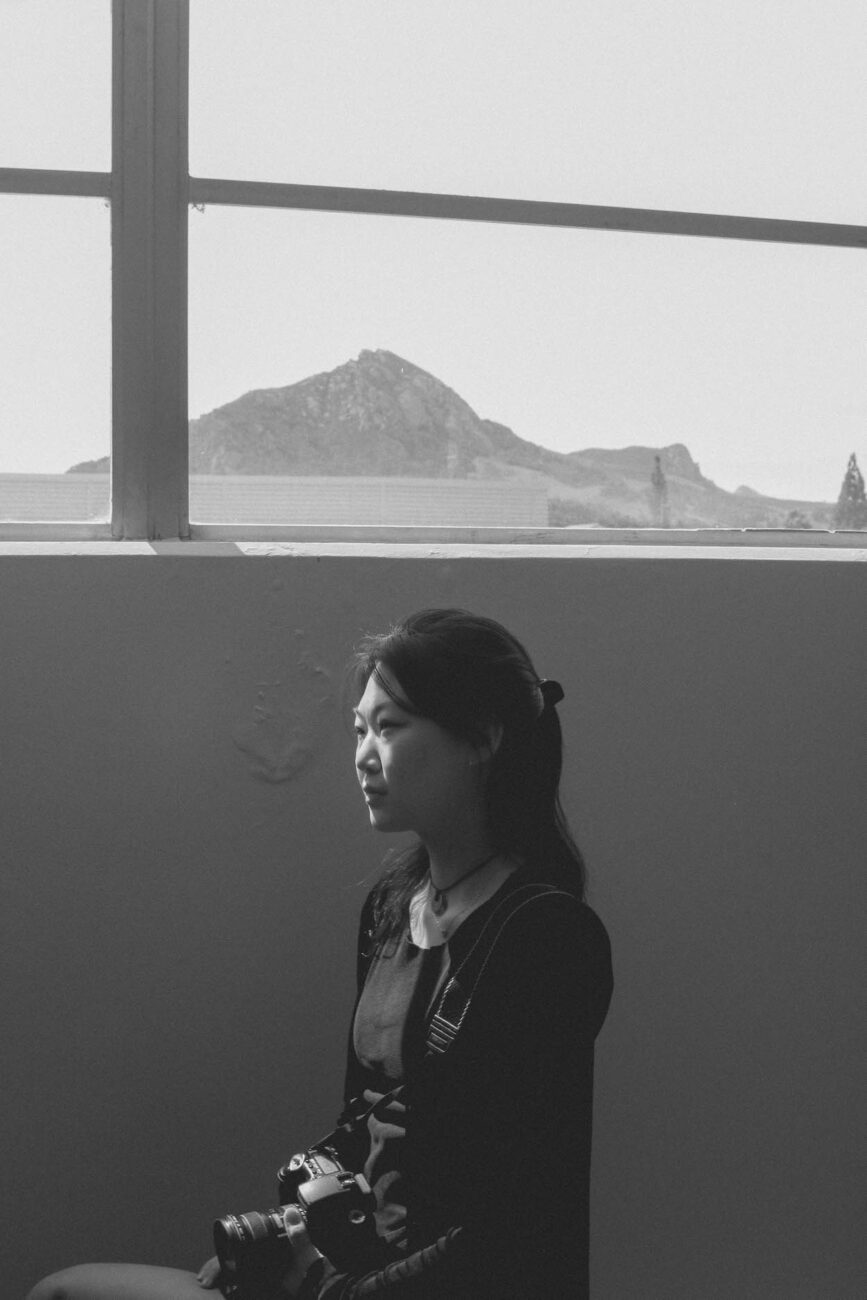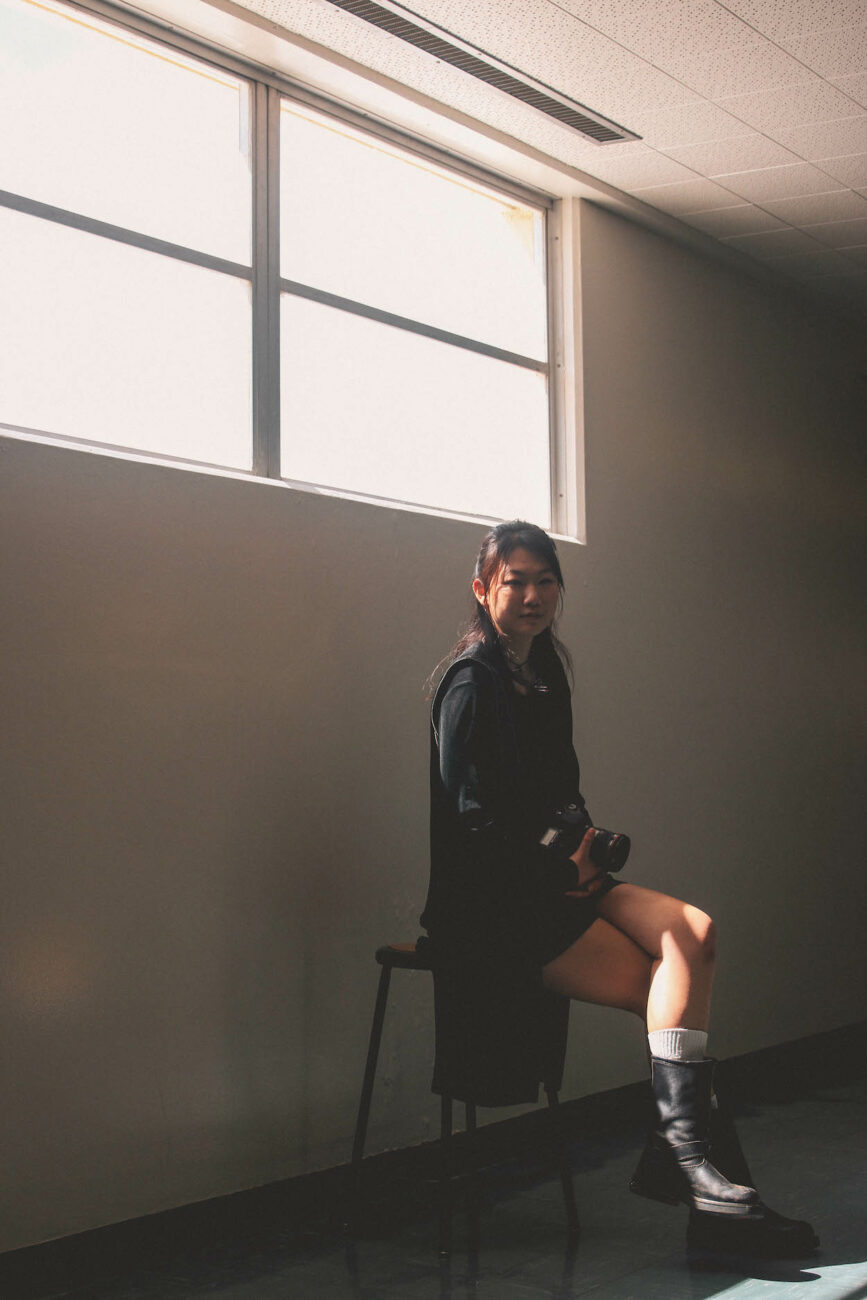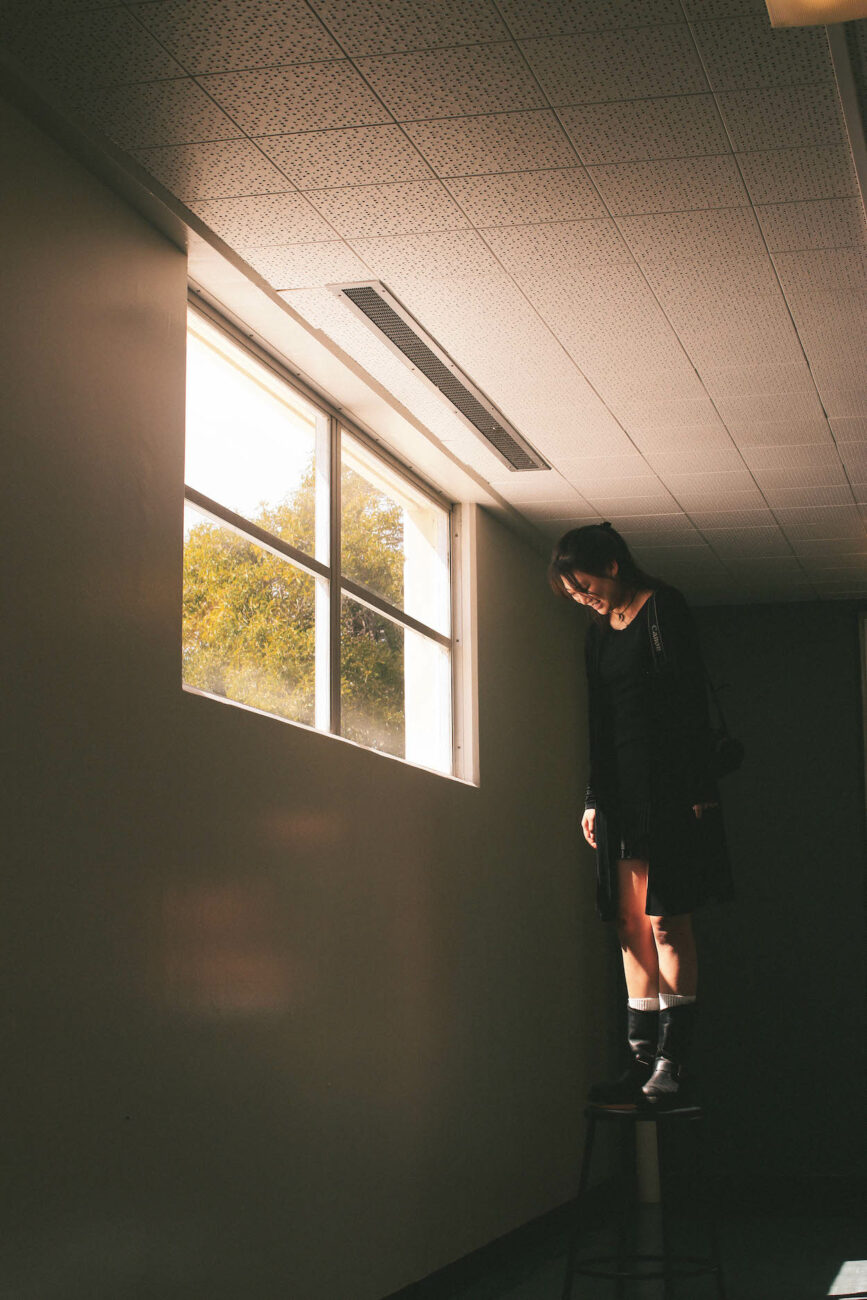“I’m making a dollhouse:” Recent Cal Poly graduate utilizes her editorial photography for storytelling

20-year-old photographer Euree Hong spent four hours with model Maiya Fukui in order to come up with the concept for her latest photoshoot.
“What should we say? What can we say together?” is a question Hong initially asks her models before each shoot.
Hong and Faiku ended up bonding over their childhood memories — one of which included Faiku and her mother making jellyfish umbrellas. This story stuck with Hong and inspired the concept of “the jellyfish,” her latest photo set.
 Hong's "the jellyfish" collection. Courtesy of Hong
Hong's "the jellyfish" collection. Courtesy of Hong Hong's "the jellyfish" collection. Courtesy of Hong
Hong's "the jellyfish" collection. Courtesy of Hong Hong's "the jellyfish" collection. Courtesy of Hong
Hong's "the jellyfish" collection. Courtesy of Hong Hong's "the jellyfish" collection. Courtesy of Hong
Hong's "the jellyfish" collection. Courtesy of Hong Hong's "the jellyfish" collection. Courtesy of Hong
Hong's "the jellyfish" collection. Courtesy of Hong
“I feel it’s almost like a coat,” Hong said. “I’m speaking, not through someone, but with someone.”
Storytelling is an essential part of Hong’s photography. The recent sociology graduate has been exploring her passion of articulating herself through her creative work since 2020.
“Doing things like making the set, designing the lighting and directing the models, it’s my way of being able to tell the story,” Hong said.
Although her father is a professional photographer, Hong only learned the technical aspect of the art during her childhood. Hong said it wasn’t until college that she discovered how to express her identity by taking photos.
Her first “photo shoot” was with her sister back in 2020. This was the first time Hong realized photography can be more than something casual with your friends — it’s a narrative you can compose.
“That’s the kind of thing that keeps sticking in every photo that I take,” Hong said. “I end up having a story that I want to tell.”
Hong constantly found herself giving her friends plots to follow when she started taking photos. Two years later, she created her first project.
Hong put together a 4-part series depicting auditory sensation and the human’s connection with music. She not only took photos but also created props such as skeletal headphones to help bring the story to life.
 Hong's first project collection. Courtesy of Hong
Hong's first project collection. Courtesy of Hong Hong's first project collection. Courtesy of Hong
Hong's first project collection. Courtesy of Hong Hong's first project collection. Courtesy of Hong
Hong's first project collection. Courtesy of Hong Hong's first project collection. Courtesy of Hong
Hong's first project collection. Courtesy of Hong Hong's first project collection. Courtesy of Hong
Hong's first project collection. Courtesy of Hong
“That one was the skeletal frame of how music can really be our framework and console us. And then I did one with one yarn about how music can feel super entangling and wraps around us,” Hong said. “[The third one] was more floral themed and had this glow [to show this] freshness when you listen, or that type of attachment that you give to music. The last one was a mirror set. The photo itself was a bunch of reflections and just a lot of light [to express how] music has the purpose of being reflected.”
Business administration junior Heather Phan was one of the models in Hong’s first project.
“The way she’s able to creatively and professionally encapsulate her vision and bring in personal experiences into her work is so wicked,” Phan said. “To support that and bring it to life was an event I’ll remember for a long time.”
Hong said as she is advancing with her work — she’s zooming out with the lens and exploring more ways to create a narrative through designing an environment and “building layers” with props.

“I’m making this dollhouse set or something,” Hong said.
Telling BIPOC narratives has always been a passion for Hong in her photography. She said she wanted to incorporate this in her senior project, “Common Ground.”
Common Ground was an art show Hong curated to bring together the SLO community to celebrate BIPOC telling their stories through art. Twelve artists were a part of Hong’s show.
“[The thing] I struggled with a lot as an artist myself is finding other people who made work that traversed similar experiences and that was really difficult in terms of navigating my own self-identity,” Hong said. “My goal was to make a space that centralized those voices in the most authentic way.”
Hong wanted to create a platform for POCs that has been lacking at Predominantly White Institutions and in the art industry.
“We’re not able to properly address the issues of why underrepresented individuals on campus feel the way that they do and feel isolated even when seeing similar people in terms of race, gender and sexuality,” Hong said. “The whole purpose of that project was to act as a safe space to share art that is very personal and vulnerable but also something that’s very necessary for us to tell each other.


After graduating, Hong said she’s still navigating what she wants to do with her creative work. However, she knows she wants to continue to tell her own story and bolster underrepresented voices in the art community.
Currently, Hong said she is working on a photography series based on her childhood and a Korean card game her family would play. The 48-card deck is based on the 12 months of the year, and Hong is working on recreating those in her own interpretation.
“I want to be proud of everything — I want to be proud that I’m a woman. I want to be proud of my cultural identity,” Hong said. “There’s so many aspects of myself that I am tired of hiding, and I just want to create something out of that and explain my journey [through my work].”











